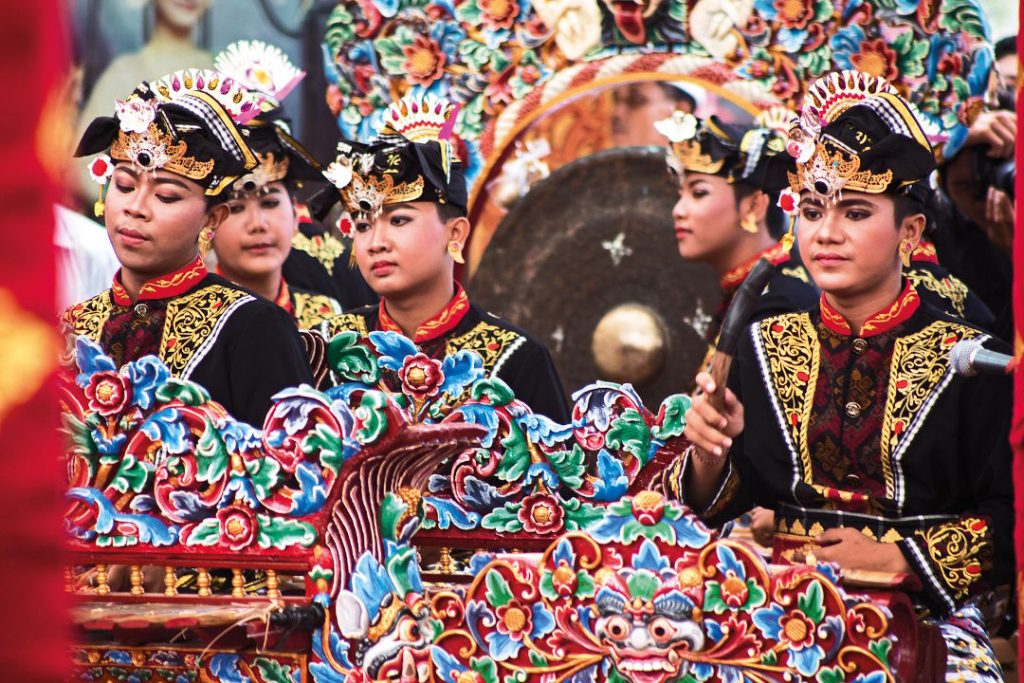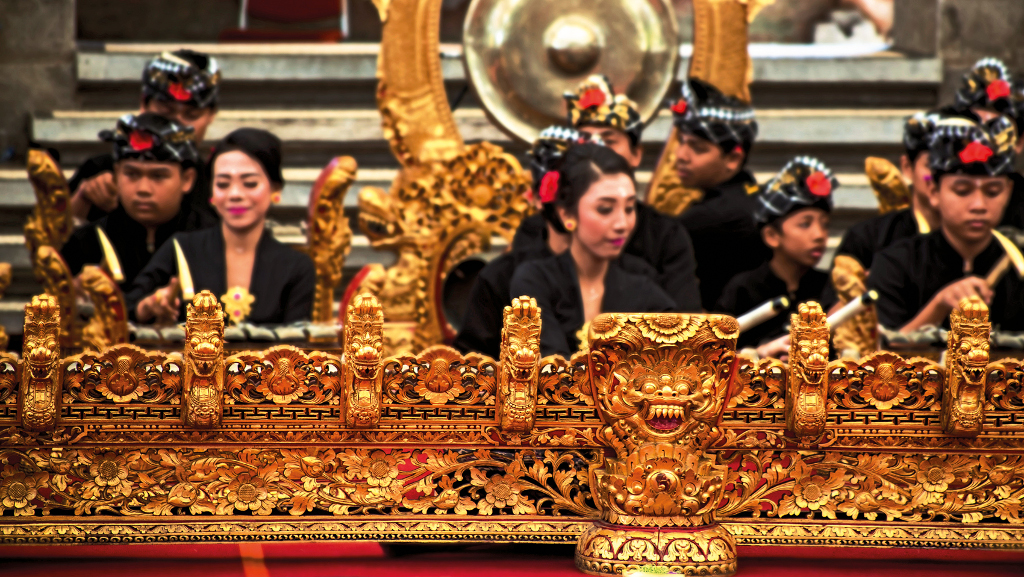
Whilst the Western world celebrates Valentine’s Day as their ‘day of love’. The Balinese Hindu observe a unique auspicious day known as Tumpek Krulut. This is considered the day of music, art and affection, dedicated to the deity Dewa Iswara (Kawiswara), a manifestation of the Almighty God.
Tumpek refers to the six specific auspicious days on the Balinese pawukon calendar, each taking place every 210-days. Krulut, comes from the word lulut which means to symbolise love and joy. The Balinese believe that art is present in every aspect of life, not limited to paintings and dances but anything that creates pleasure. Tumpek Krulut is a tribute to this understanding, conveyed through a mutual love for music. Therefore, on Tumpek Krulut instruments like the gamelan orchestra will be blessed and celebrated for their contribution to prayer, worship and the enjoyment of life.
Wonderfully synched with hymns, dancers and singers, the gamelan is seen to have an ‘infectious’ charm, blessing the people with the kind of euphoria and euphony that should be emulated in daily life.

Tumpek Krulut essentially parades around the personification of gamelan and human life that the Balinese believe to be analogous and exemplary for their way of life: each player and their respective role working in harmony to complement one another. The Balinese ‘Valentine’s Day’ is a biannual reminder of this. The age-old orchestra also teaches the people to coalesce kaja and kelod (north and south), kangin and kauh (east and west) and meet in the middle to form chakra or swastika, a symbol for unity.
You may see Denpasar’s Puputan Park light up with gamelan performances on Tumpek Krulut. You’ll most likely watch the gamelan gong, a genre of Balinese music, performed on this holiday especially to create that sense of peace or santha rasa. Titilaras (musical scale of the gamelan) is known to be one the manifestations of Panca Brahma or the five gods — sa, ba, ta, a, i but translated via gamelan instruments as ndang, nding, ndung, ndeng, ndong. This ‘concept’ of sound is key to orchestrating the ultimate euphony.
In its purest form, Tumpek Krulut is the day to bless gamelan instruments in hopes of producing holy sounds and harmonies. On this day, they also pray for modern musical instruments, such as guitars or pianos.






